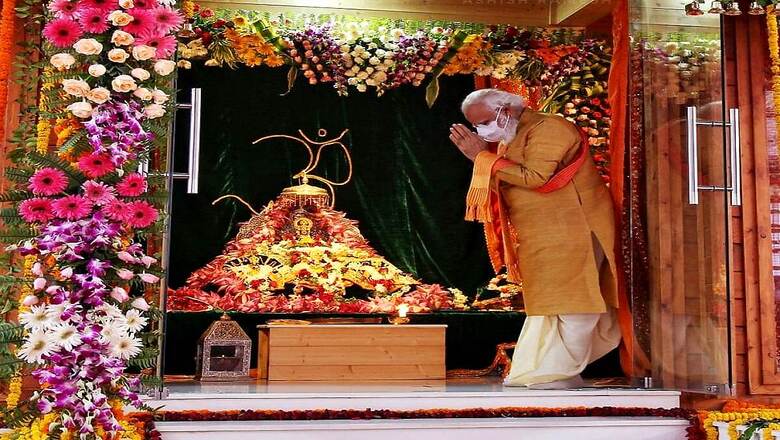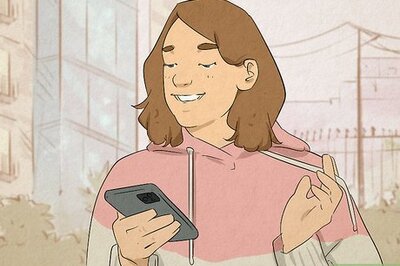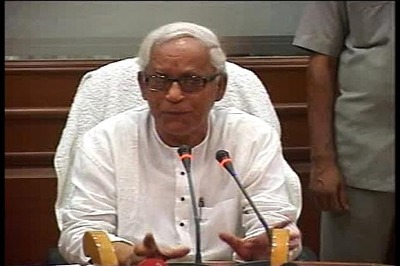
views
Prime Minister Narendra Modi's address at Ayodhya was statecraft at its absolute best. A country bedeviled by poverty, regional and social inequalities and a deep digital divide, all aggravated by Covid-19, could do with a sense of unified purpose and a utopian ('Ram Rajya') vision of the future. Modi did not disappoint.
The Lord Ram he invoked at the foundation ceremony of the Ram Janmabhoomi Temple is a multi-faceted cultural icon, in tune with the realities and requirements of India's political economy.
He symbolizes the civilizational glue that binds India geographically and socially, is the harbinger of good governance, a potent source of India's soft power and a driving force for self-reliance.
Modi continually stressed the 'unity in diversity' and the social justice and harmony aspects of the Ramayana. He pointed out that there are multiple and equally valid versions of the Ramayana in every language and region and therefore, Lord Ram is a pan-Indian figure common to all communities and sections of society.
At several points in his speech, he dwelt on the freedom movement, underscoring India's cultural continuity despite millennia of political turmoil. He drew on Mavale, Suhel Dev and Mahatma Gandhi to drive home the contention that the Ram Temple, like Independence, was the result of a united struggle, cutting across lines of caste, community and gender.
Accordingly, he presented the Ram Temple as simultaneously a closure and a beginning. An end to the cycle of destruction and rebuilding and the start of a new chapter in history. In other words, let's move on from December 6, 1992 in solidarity and build the Ram Temple “with bricks of love, respect & brotherhood”.
The significance of his emphasis on Sita — “Jai Siyaram...Siyavar Ramchandra ki jai” — was not lost on listeners. Nor was the flavour of syncretism, in the mention of Ayodhya's close link with Buddhism and Jainism and Lord Ram's significance in Sikhism.
Modi highlighted his government's respect for Constitutional 'maryada' (limits) — in keeping with the values of 'Maryada Purushottam', as Lord Ram is known — by awaiting the Supreme Court's verdict on the Ramjanambhoomi issue (no longer hyphenated with Babri Masjid). He made it a point to mention that he was an invitee, like Rajendra Prasad at Somnath in 1951, and had thus not crossed a line in terms of prime ministerial conduct by showing up at a religious ceremony.
To India's youth, born after the fall of the Babri Masjid, he portrayed Lord Ram as an icon of contemporary relevance, thrice using the term 'modern': “Ram is in favor of change and modernity... Ram Temple would be the modern symbol of our culture. I am intentionally using the word 'modern'.” His explication of the economic advantages of the Ram Temple for Ayodhya and the surrounding region were also aimed at the youth.
Modi took the opportunity to remind the ASEAN countries (currently China's biggest trade partner) of their cultural links with India. And to the Indian diaspora across the world, he signalled that they are part of a great nation, defined by shared values and ideas and not by geographical boundaries.
RSS sarshanghchalak Mohan Rao Bhagwat, the chief guest at the ceremony, echoed Modi's message of unity and social harmony but also stressed the civilizational reassertion aspect of the Ram Janambhoomi Temple: “the confidence needed to make India self-reliant....the self-awareness that was needed, the realization of its establishment is starting today”.
His vision of a resurgent India outstripped Modi's. India, he said, would arise stronger from the ashes of Covid-19 and play a leadership role by finding a solution to the challenges on the other side of the pandemic. The establishment of the Ram Temple symbolizes that resolve.
He underscored the pivotal role played by the RSS in actualizing the Ram Temple, by recalling the words of his predecessor Balasaheb Deoras: “(He) had reminded us...that it would take 20-30 years to work and in the beginning of the 30th year we would have to fulfill the resolution”. He recalled other key figures: the late VHP chief Ashok Singhal, Mahant Ramchandra Paramhans and LK Advani.
In sum, Modi's vision of Ram Rajya demands unity, 'social harmony', 'support of the poor and the oppressed', 'atmanirbharta' and 'maryada' and he is promising to deliver. The yatra is over and a new yatra begins.




















Comments
0 comment